A Kino Lorber Western Roundup!
EL PASO (1949)
DIRECTED BY LEWIS R. FOSTER
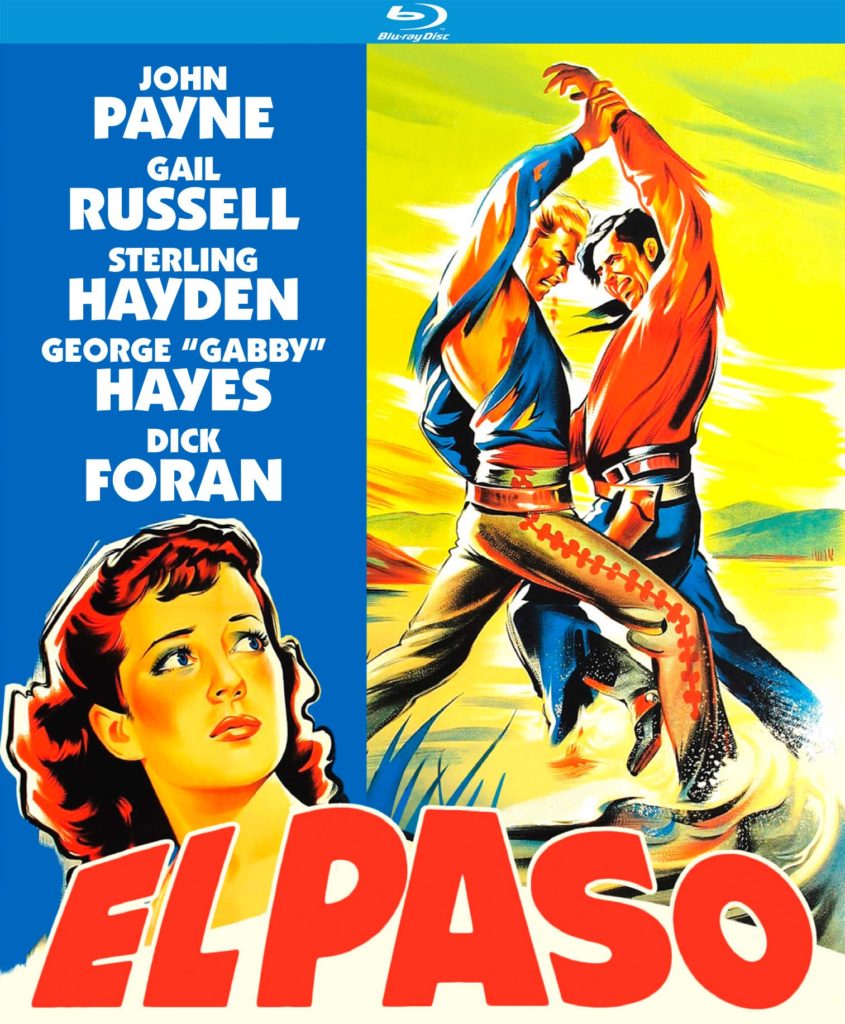
THE APPALOOSA (1966)
DIRECTED BY SIDNEY J. FURIE
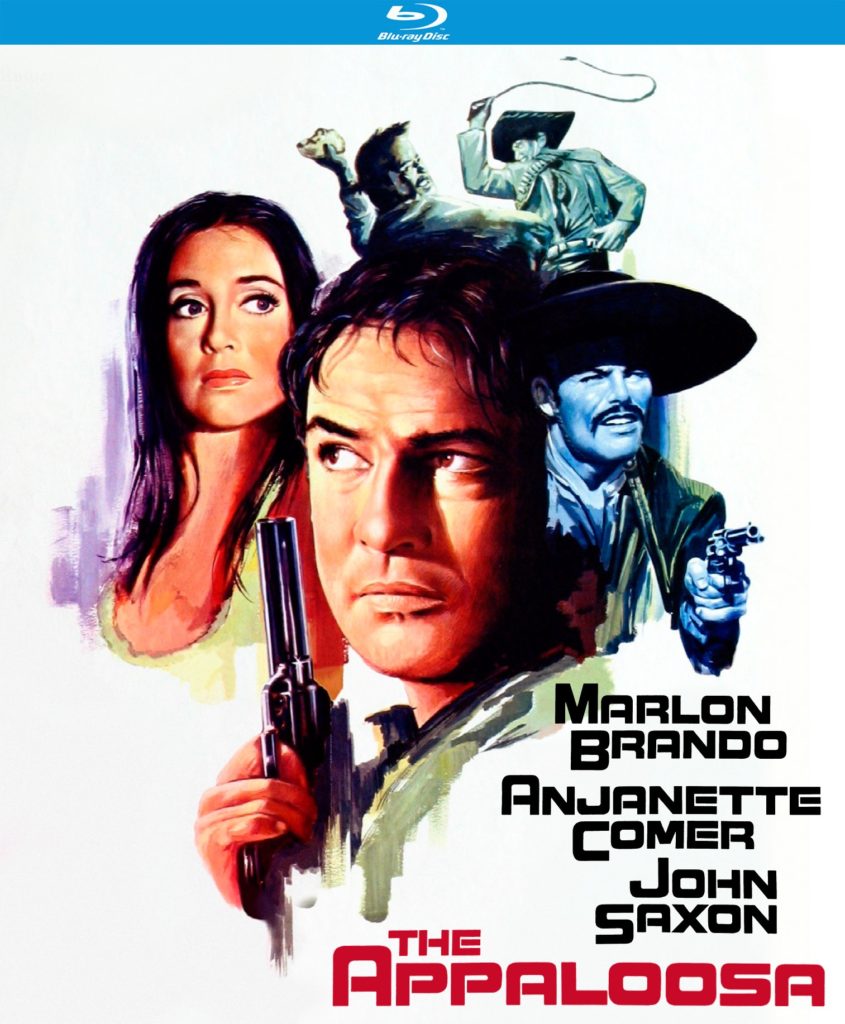
TELL THEM WILLIE BOY IS HERE (1969)
DIRECTED BY ABRAHAM POLONSKY
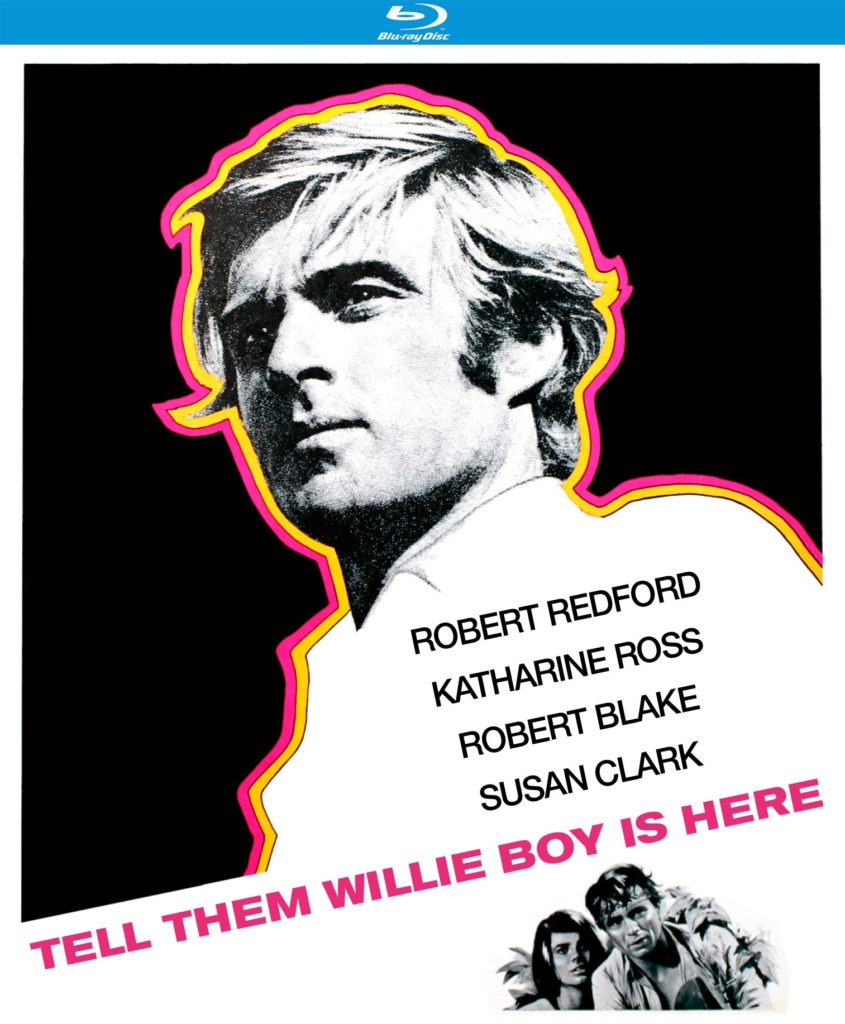
STREET DATES: January 2nd, 2019/KINO LORBER STUDIO CLASSICS
In his 2001 biography and critical study Searching for John Ford, film scholar Joseph McBride convincingly argues that the American film director most associated with and celebratory of the Western genre was also one of its greatest artistic critics. Even as the U.S. Cavalry rides high through the Great Plains, and as Native American settlements lie decimated in their wake, John “I am a director of Westerns” Ford could simultaneously demonize the perpetrators of gross injustice against an indigenous people while also heroizing the military representatives’ noble pursuit of a national ideal. Similarly, as McBride views it, the very Western landscape is consistently used to singularly complicated effect in Ford’s cinema; both beautiful and forbidding, heroic and anti-heroic figures as diverse as the Ringo Kid, Wyatt Earp, Colonel Owen Thursday, and Ethan Edwards are simultaneously framed large against and loomed large over by the backdrop of endless open sky and jutting butte formations.
This visual, stylistic, and thematic ambivalence at the heart of the most persistent of American genres, no more so than in the cinema of its greatest practitioner, reverberates through even the humblest of B-Oaters, belying an often simplistic viewing of the picturesque locale or its deceptively uncomplicated heroes. Much more than an idealized portrait of American history, Kino Lorber rounds up three less known but powerful reminders in early 2019 of the light and darkness commingling in those starkly sunlit desert views stalking horse riders through shadowy canyon passes. As this trio of Westerns shows across two decades of real-to-reel history, justice and its pursuit are never as simple as the figures either pursued or pursuing.
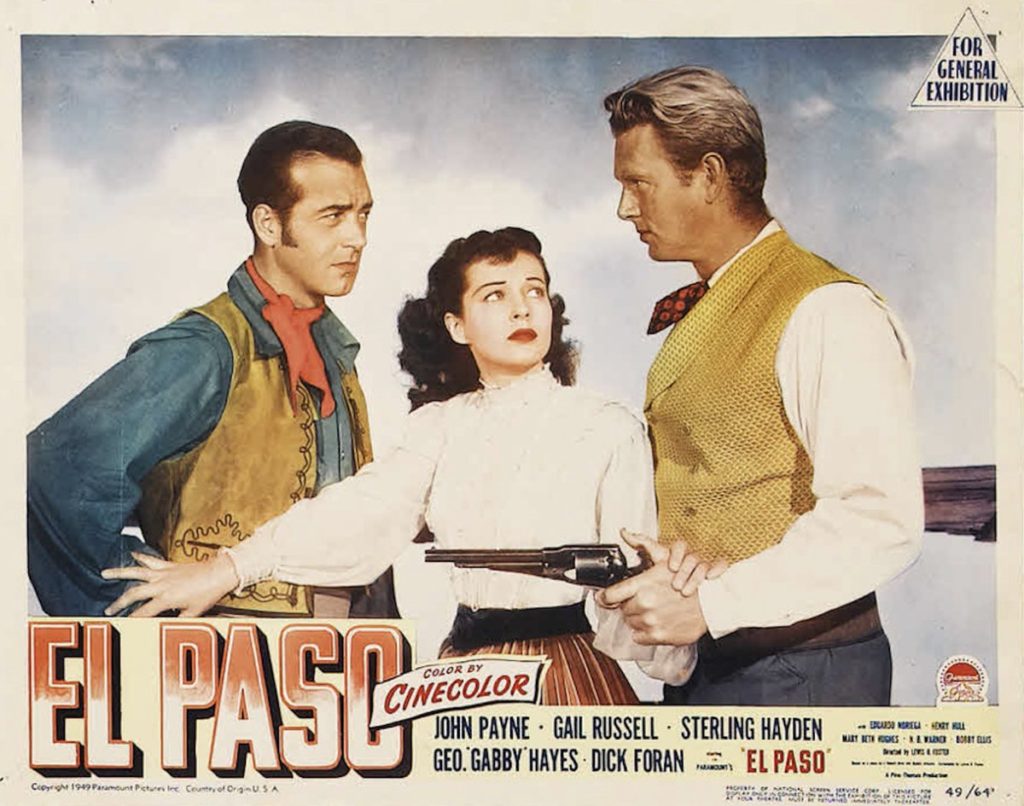
El Paso pursues its hero from his post-Civil War, Charleston family mansion in the film’s opening scenes to the wide-open territory of Westernmost Texas. John Payne stars as a former Confederate officer whose practice of the law has been disrupted by war, only to be uneasily resumed in the film’s title location. Also uneasily resumed is a pre-war romance with fair-skinned, dark-haired beauty Gail Russell, whose morally-weakened father, played by Henry Hull, is a once-upstanding, now dissolute and compromised judge manipulated by the town’s powerful saloon owner, played by Sterling Hayden, and bullying sheriff, Dick Foran. As tensions and conflicting interests mount, murder, reprisal, and their endless cycle of repetition climax in a dust storm street battle between the border town’s corrupt vested interests and Payne’s increasingly violent vigilante group, whose brand of frontier justice has proved equally questionable to that of the destructive forces they have been battling.
Produced in 1949 by Paramount Pictures’ highly profitable B-unit founded by Williams Pine and Thomas, Pine-Thomas, the “Dollar Bills” of low-budget filmmaking, delivered their first million-dollar movie to their parent studio in cost-saving, two-tone Cinecolor and with familiar backgrounds from the San Fernando Valley’s famed Iverson Ranch. Writer-director Lewis R. Foster draws on the equally familiar Western elements in true straight-ahead, go-for-the-gut pulp style, yet the images of hanging trees, street-dragged bodies, and gunned-down innocents linger well past the point of casual enjoyment. Just as the visual shades of Cinecolor register somewhat other than pure red or blue, falling somewhere closer to orange-turquoise in Kino Lorber’s faithfully re-represented 4K digital scan, so to do the moral complications and personal compromises of a good man who takes justice into his own hands appear less easy and more troubling in the final viewing balance.
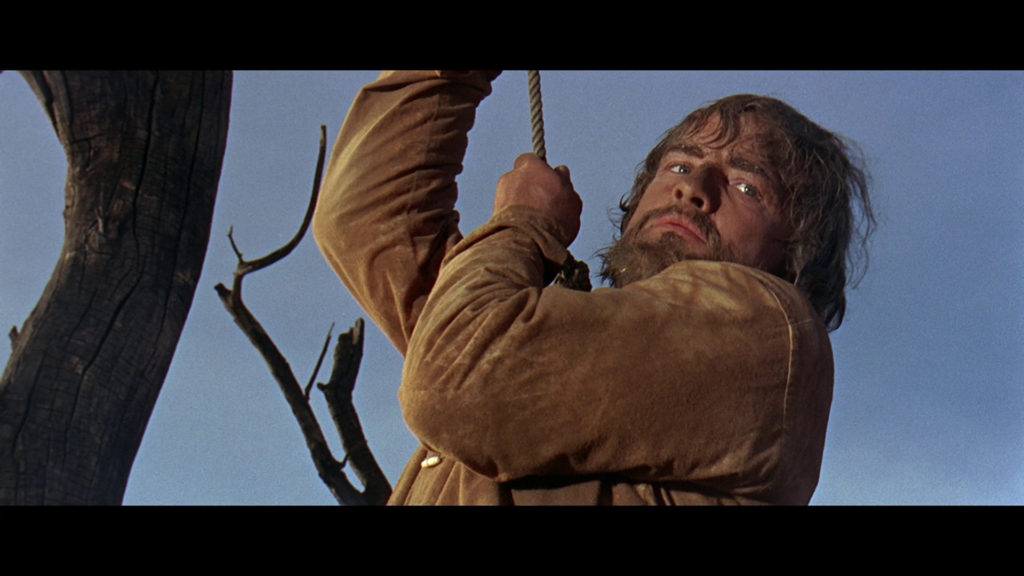
The Appaloosa picks up on many of these story-elements and themes for another tale of recrimination and revenge along the US-Mexico border. Five years after the Civil War, Marlon Brando plays a returning Civil War veteran who rides into town with the title horse and the intention to start a ranch with his adopted Mexican brother, his brother’s young family, and his advantageous animal. Like Ethan Edwards in John Ford’s The Searchers (1956), the prodigal’s grizzled, unkempt reappearance visually signifies his life in the interim spent outside the law, and his unknowing offense in a church to the beautiful mistress (Anajette Comer) of a Mexican bandit (John Saxon) spurs a vendetta with the latter after Brando refuses to satisfy the bandit’s insulted honor by relinquishing the horse. The horse is promptly stolen, followed by torture and humiliation on his adopted family’s land, and leads to a pursuit across the Mexican border deep into the bandit’s seat of power. There, the kidnapped animal becomes less an object of recovery than a symbol of stubborn pride though an escalating and increasingly deadly rivalry involving a memorable arm wrestling match over a poisonous scorpion’s fatal sting, the unexpectedly shifting allegiance of the bandit’s erstwhile mistress, a painfully deep-dug, grave-set recovery, and a climactic shootout on a mountain cliff.
Although he made relatively few, a Marlon Brando Western never lacks interest, and the moody, flamboyantly shot revenge tale plays like a Method-acted genre film employing European-influenced stylistics. Directed by Sidney J. Furie and shot by Russell Metty, the grand yet intimate scope of its widescreen compositions — dramatically fusing foreground objects and oppressive close-ups with stunning landscape imagery — shows to great advantage and crisp detail on Kino Lorber’s Blu-ray transfer, preserving the full visual depth of the story’s complex thematic content. A revenge tale whose resolution once again belies the troubling obsessions of its characters — honor and good intentions darkened by a too single-minded pursuit of elusive ‘justice’ — falls deadly short of the Edenic paradise by which they are surrounded.
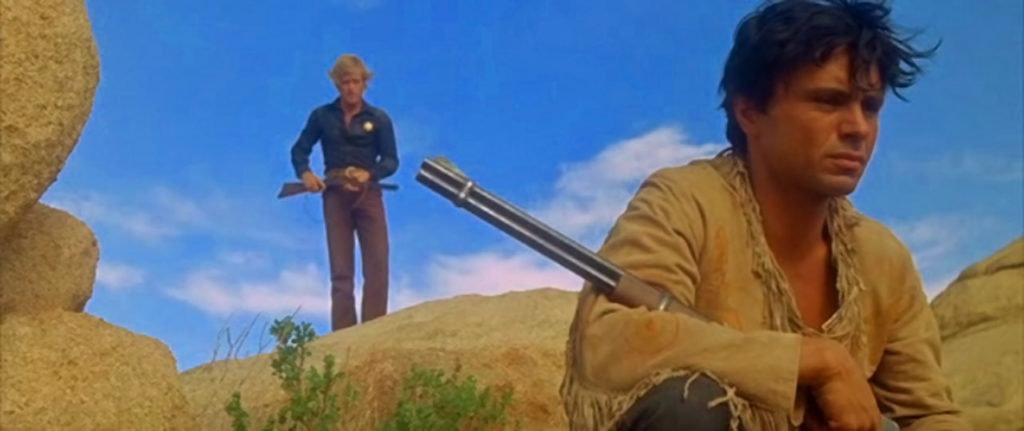
Tell Them Willie Boy is Here resolves this Western Cycle of revenge, justice, and pursuit by casting each thematic category into its darkest shade yet. Based on author Robert MacLeod’s 1960 novelistic historical study Willie Boy, which relates the true story of a Pauite who killed a white man and led law enforcement on a weeks-long foot-chase over the mountains and through the canyons of 1909 Southern California, this passionate re-telling takes viewers across the hidden highs and chasm lows of the dreamlike desert landscape from the shifting perspectives of those both pursuing (headed by Robert Redford’s sympathetic lawman) and pursued (Robert Blake’s title character). The major thematic and visual twist here, narratively and stylistically appropriate to its genre revisionist subject matter, is Willie Boy’s open defiance to the American West and its inherently racist values. The hunted figure’s death may be a foregone conclusion, along with the symbolic end of his people and the life and traditions they represent, but Willie Boy, accompanied by his wife in-spirit-only Lola (Katharine Ross), will come to choose both the manner and import of his own demise.
Directed by Abraham Polonsky, who had been blacklisted soon after completing his first feature, the film noir Force of Evil, in 1949, the preoccupations of a hounded, hunted man are on chilling dramatic display in a director’s long-delayed second feature. Luminously shot by Conrad Hall, the dramatic dislocation of the title character from the very land to which he is heir is stylistically reflected in the disorienting landscape he virtually leads his own desperate chase through. From the discomforting opening images of a community fractured along racial lines to the film’s bitterly delivered final line, spoken by Willie Boy’s conflicted killer, the resonant afterglow of the title quarry’s ashes rising above the morbid curiosity of a white newspaper’s vast readership achieves a curious note of tragic triumph: Willie Boy will be here long after the credits roll, the film fades to black, and the dying embers scatter in the wind.
…
Rounding out our Western Roundup on all Blu-rays reviewed above is a more than OK Corral of scholarly, informed, and informative feature-length commentary for each movie. Toby Roan provides exhaustive yet never exhausting production and personnel detail on 1949’s El Paso, which not only illuminates the feature under discussion but the entire industry that routinely realized films like it. Lee Pfeiffer and Paul Scrabo talk up 1966’s The Appaloosa, and particularly this period of Marlon Brando’s career when the legendary actor’s star was on the wane, but his unusual film choices nevertheless retained the eccentric yet natural quality of his always compelling performances. Brothers Pat and Jim Healy draw on the Wisconsin Historical Society’s wealth of film and television archives — particularly their holdings on the career-spanning personal papers of writer-director Abraham Polonsky — for a deeply researched discussion of 1969’s Tell Them Willie Boy is Here’s many complexities. Individually assembled from the best source elements available, even dutifully preserving the unavoidable visual decay of speckled optical printing errors in several shots of El Paso, these three desert journeys will undoubtedly inspire future pursuit of past Western treasures. Let’s hope Kino Lorber will keep more of ‘em a-comin’!
With the exception of the cover image and the image representing 1969’s The Appaloosa, which are credited to DVDBeaver and are taken directly from Kino Lorber’s Blu-ray, all other images or promotional material merely reference the film without reflecting the image quality of the Blu-rays.


